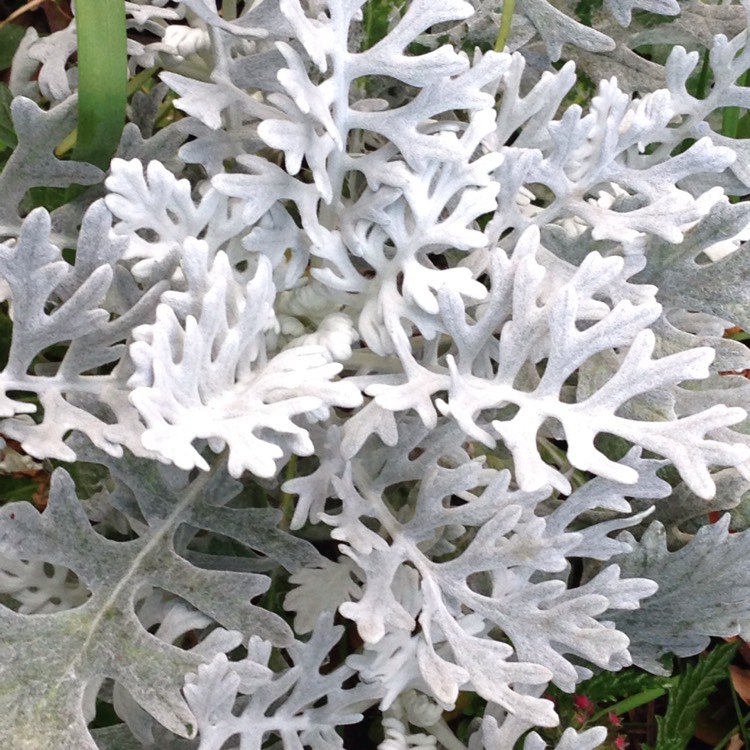
Senecio cineraria 'Silver Dust', Silver ragwort 'Silver Dust' uploaded by rosegardengirl
The botanical name Senecio cineraria, the plant originates from the arid regions of the Mediterranean and is a member of the Asteraceae family.. Silver Dust Plants - The dusty miller silver dust variety has finely cut silvery-white foliage that grows 12″ -18″ inches tall. Often planted with annuals in flower beds and containers.

Cineraria Maritima Name Silver Dust Plant) 125mm Pot Dawsons Garden World
Senecio cineraria 'Silver Dust' Senecio cineraria Senecio maritimus, Senecio candicans, Cineraria maritima. Half-hardy Annual. FROM £9.99. 86% (9 Reviews) Garden Club Members Price: FROM £8.99 JOIN TODAY. Awarded an RHS Award of Garden Merit. Finely divided silvery white foliage. Use it as an edging to the border as feature plants or in pots.

Senecio cineraria 'Silver Dust', Silver ragwort 'Silver Dust' in GardenTags plant encyclopedia
During mild spring and summer weather, you may only have to give about 1" (2.5 cm) of water a week. In hot, arid conditions, you might need to thoroughly water silver dust plants twice a week. However, dusty miller survives well during drought. Senecio cineraria is also a xeric plant that is suitable for xeriscape landscaping.
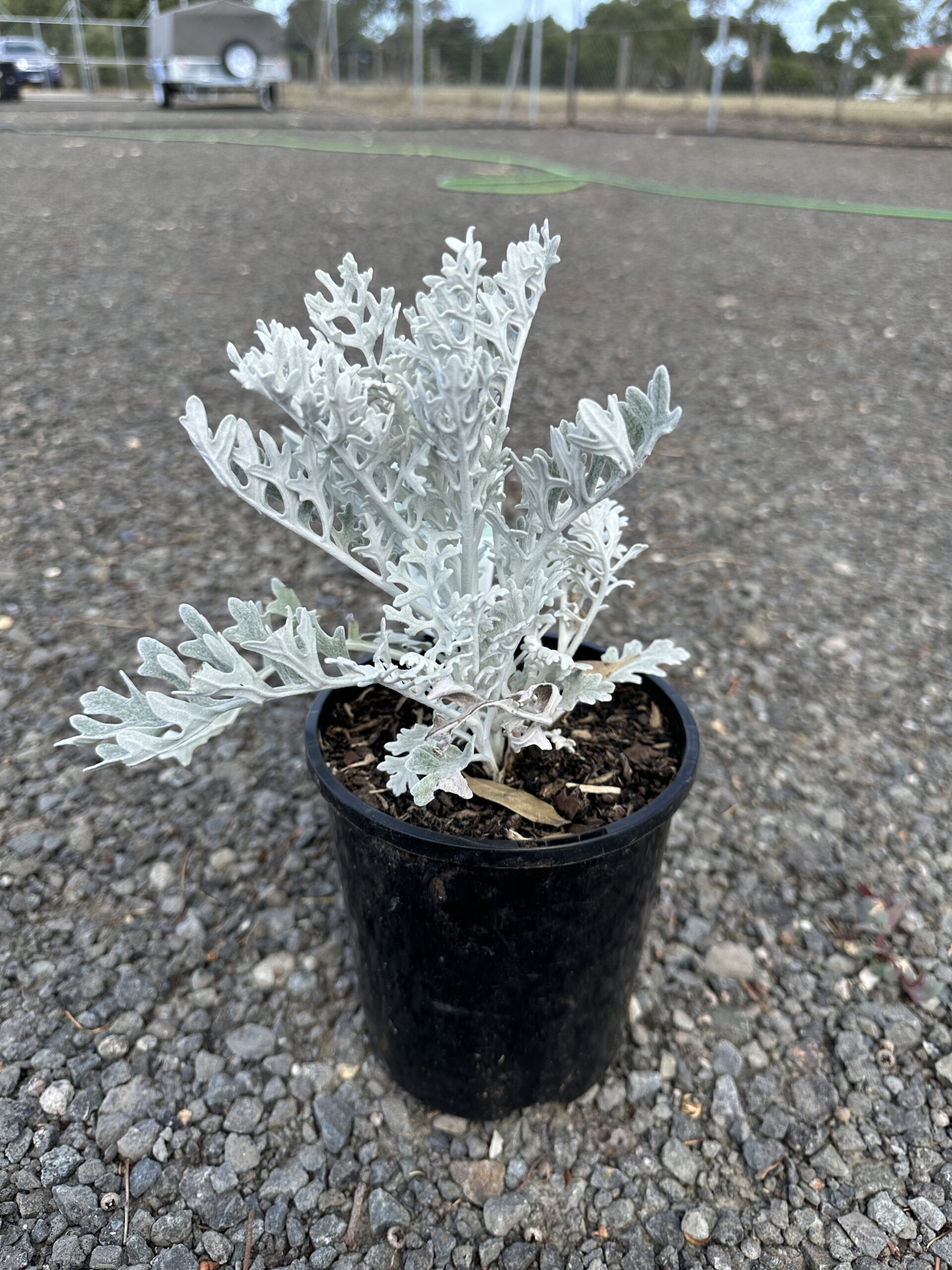
Silver Dust Plant 'Cineraria Senecio' Horseshoe Bend Nursery
Silver Dust Dusty Miller is a fine choice for the garden, but it is also a good selection for planting in outdoor containers and hanging baskets. It is often used as a 'filler' in the 'spiller-thriller-filler' container combination, providing a mass of flowers and foliage against which the larger thriller plants stand out.
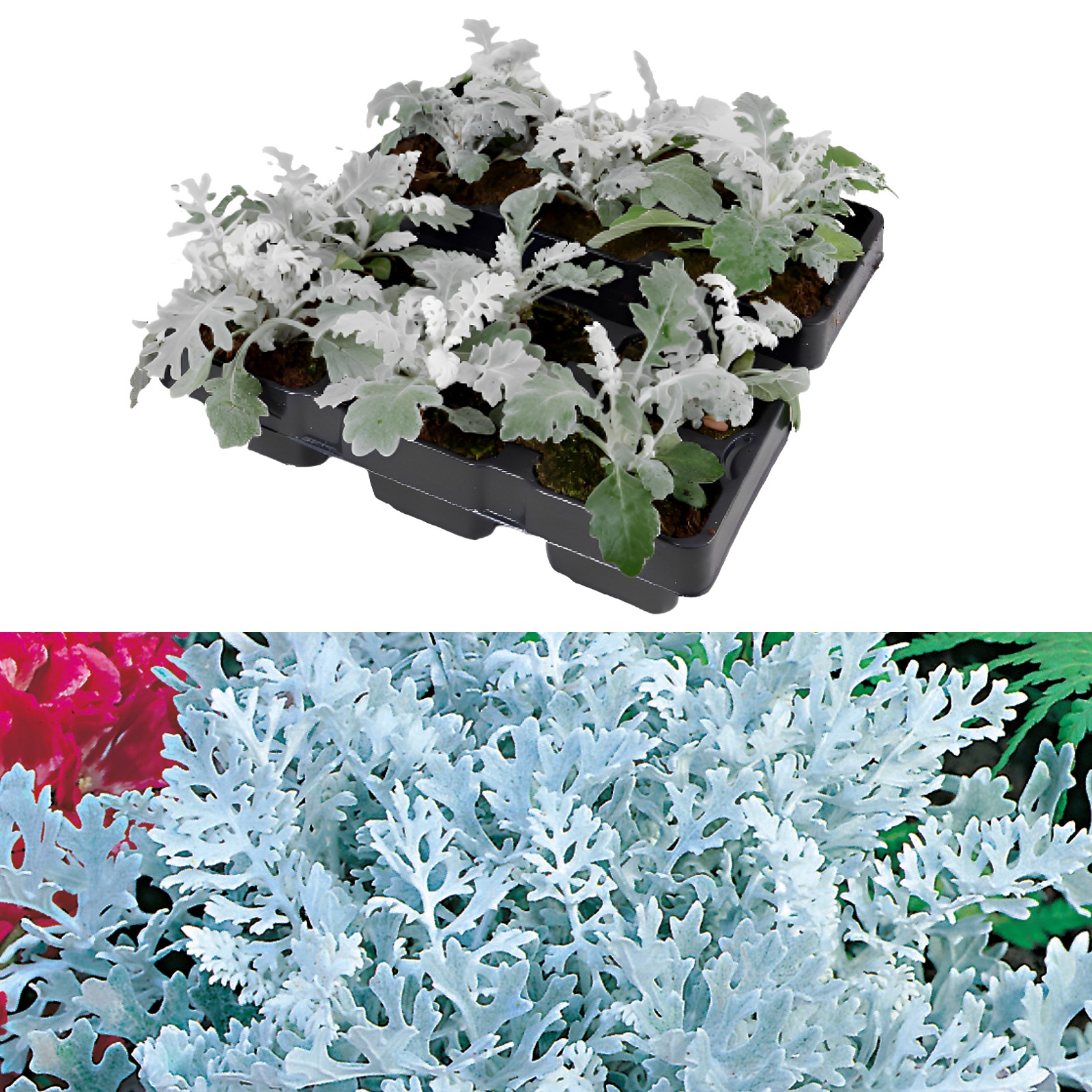
Cineraria ‘Silver Dust’ Plants 12 Pack Carbeth Plants
The plant can be grown from seed or cuttings. In the summer, take tip cuttings from semi-hard wood.. 'Silver Dust' 'Silver Lace' 'Silver Dust', 'Silver Lace'. cineraria Family: Asteraceae Uses (Ethnobotany): As an accent bedding plant against flowering plants of a deep magenta, burgundy or purple. Life Cycle: Annual
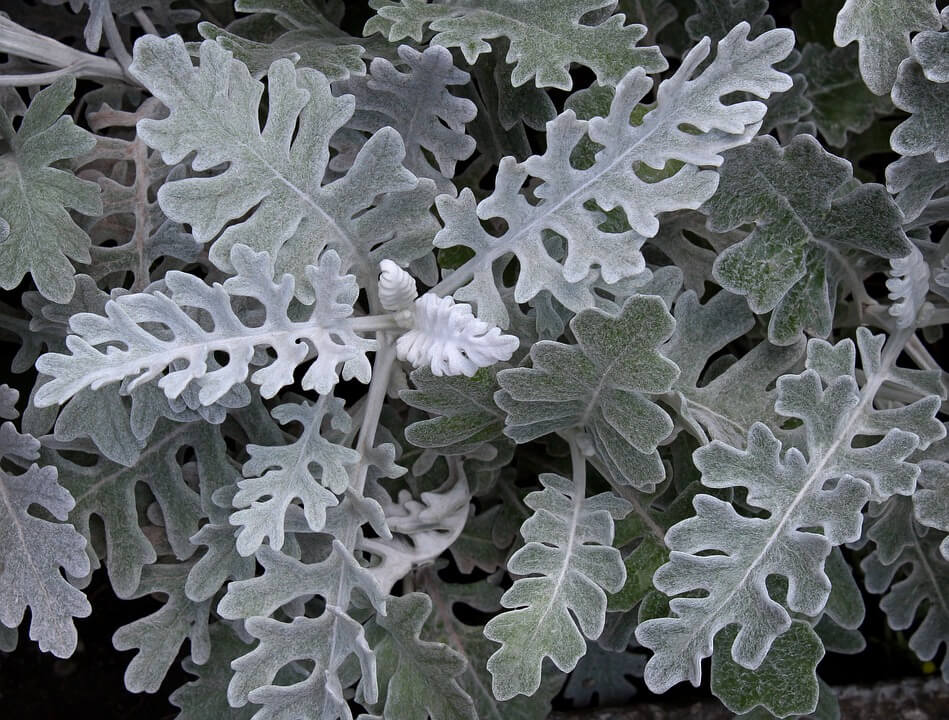
Cineraria 'Silver Dust' Riverside Garden Centre
Cineraria Silver Dust is a sun-loving plant that thrives in full sunlight. It is important to provide this plant with at least 6 to 8 hours of direct sunlight each day. This will ensure that the plant receives enough light to photosynthesize adequately and grow to its full potential. However, if you are growing Cineraria Silver Dust in a region.

Cineraria Silver Dust seeds The Seed Collection
Adds contrast and texture to beds and borders. Size and uniform habit also make Silverdust perfect for container plantings. Seed is graded for more uniform germination. Silverdust Dusty Miller Maritima - Bushy, uniform plants have finely cut, silvery-white, velvety leaves. Good for gardens, landscapes and containers.
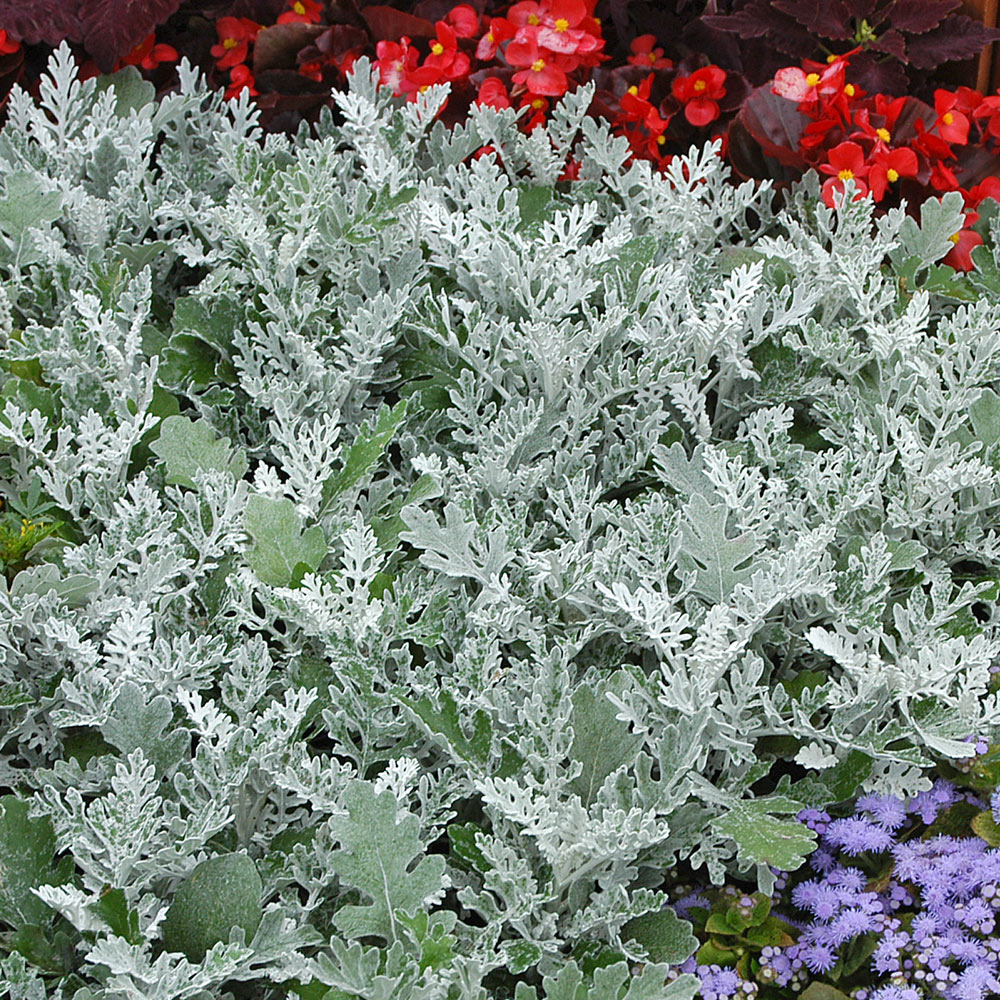
Senecio cineraria 'Silver Dust' Dobies
The Silver Dust plant, scientifically known as Senecio cineraria, is a stunning indoor plant with silver-colored foliage that adds a touch of elegance and beauty to any space. Its unique appearance makes it a popular choice among plant enthusiasts who are looking for something out of the ordinary.

Senecio cineraria 'Silver Dust', Silver ragwort 'Silver Dust' uploaded by rosegardengirl
'Silver Dust' is a tender shrub, usually grown as a half-hardy annual foliage plant. Its young leaves resemble oak leaves, but as the plants mature they become deep cut pale and silvery. It's perfect for growing at the front of a border or in a container. For best results grow 'Silver Dust' in moist, well-drained soil in full sunlight.
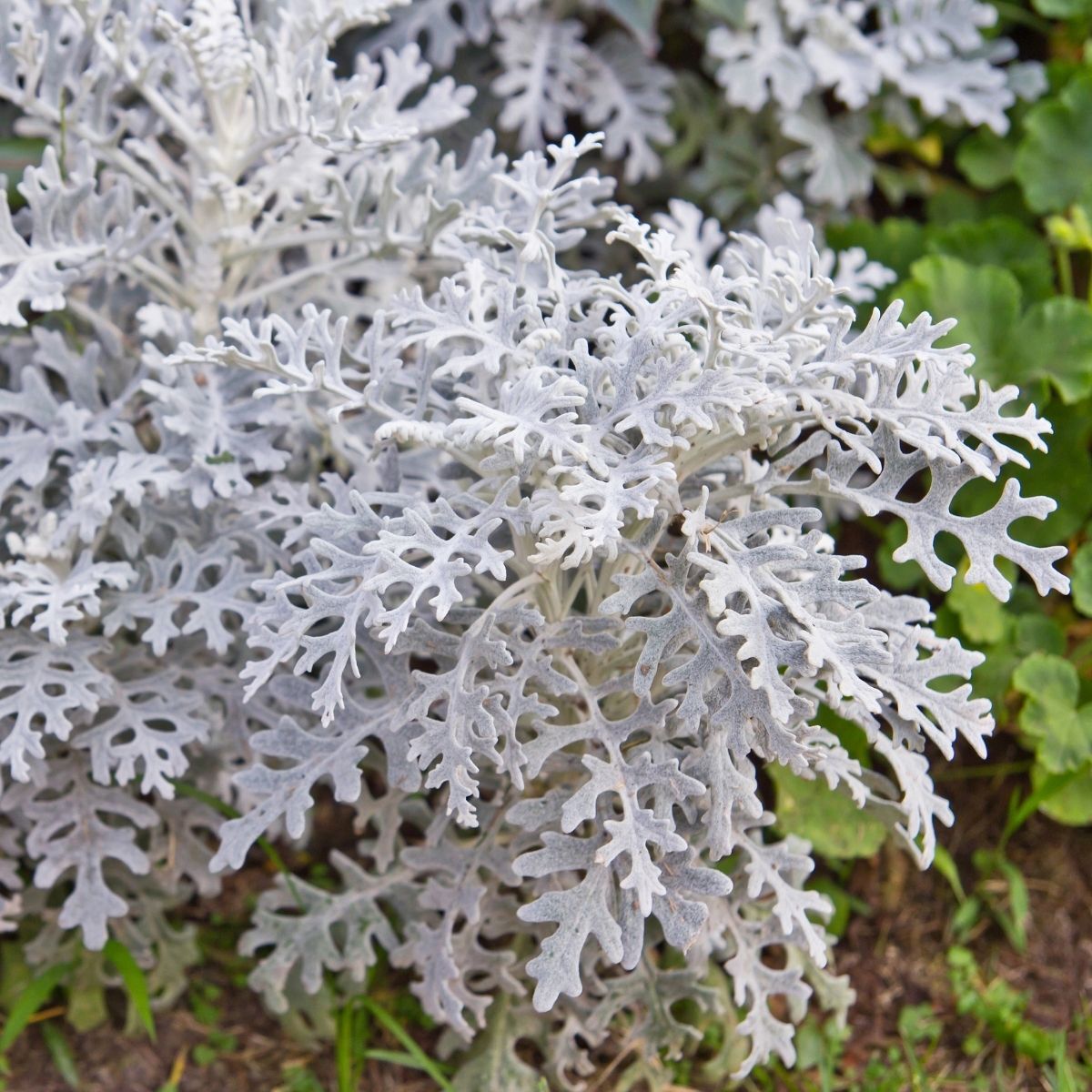
Cineraria Silver Dust seeds The Seed Collection
You can propagate dusty miller by cuttings in the spring when plants are putting out the most rapid new growth. Cut off a 6-inch stem with clean, sharp shears. Strip the leaves from the base. Dip the stem in rooting hormone. Fill a small pot with soilless potting soil and moisten until the water drains.

Cineraria Silver Dust Seeds from Mr Fothergill's Seeds and Plants
Centaurea cineraria, the velvet centaurea, is also known as dusty miller and silver dust (though these latter two names may also apply to Jacobaea maritima and Silene coronaria ). Centaurea cineraria is in the family Asteraceae and is endemic to Italy. [4] [5] In natural settings, it grows on coastal cliffs, ranging from 0-350 m above sea.
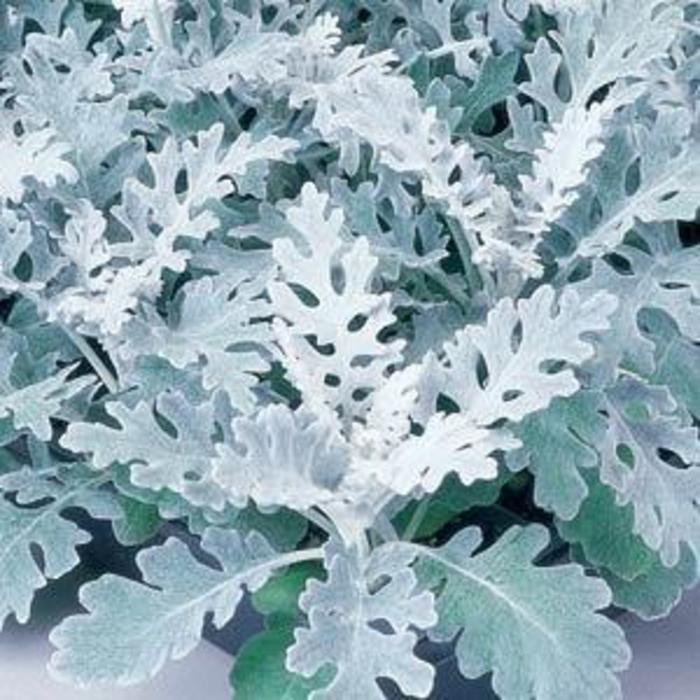
Senecio cineraria 'Silver Dust' Dusty Miller Ebert's Greenhouse
Remove all but the top leaves. Dip the cut end in rooting hormone, then plant it in a small pot filled with ordinary potting soil. Moisten the soil and place the pot in a large plastic bag, taking care that the plastic does not touch the leaves. Place the cutting in a cool location with good indirect light.

Cineraria Silver Dust Mr Middleton Garden Shop
Senecio cineraria ( Silver Dust Dusty Miller ) This annual is grown for its attractive silvery-gray foliage and mounding form. 'Silver Dust' has lacy, deeply dissected, nearly white leaves and grows to 12″ tall and wide. Can over winter and act like a perennial in warmer areas, or if mulched heavily.

Silver Dust Dusty Miller (Senecio cineraria 'Silver Dust') in Oklahoma City Edmond Norman Moore
Senecio Cineraria 'Silver Dust' (Dusty Miller) is a low-growing sub-shrub that is often treated as an annual. It has deeply-divided leaves, up to 15 cm long, that are obviously silvery-grey to almost white in colour. It is commonly used in bedding plantings to create contrast or definition. The loose, yellow flower heads appear on long.

Senecio cineraria 'Silver Dust', Silver ragwort 'Silver Dust' uploaded by sue1953
Species: cineraria Cultivar: 'Silver Dust' Skill Level: Beginner Exposure: Full sun Hardiness: Tender Soil type: Well-drained/light Height: 30cm Spread: 30cm Time to plant seeds: March to May
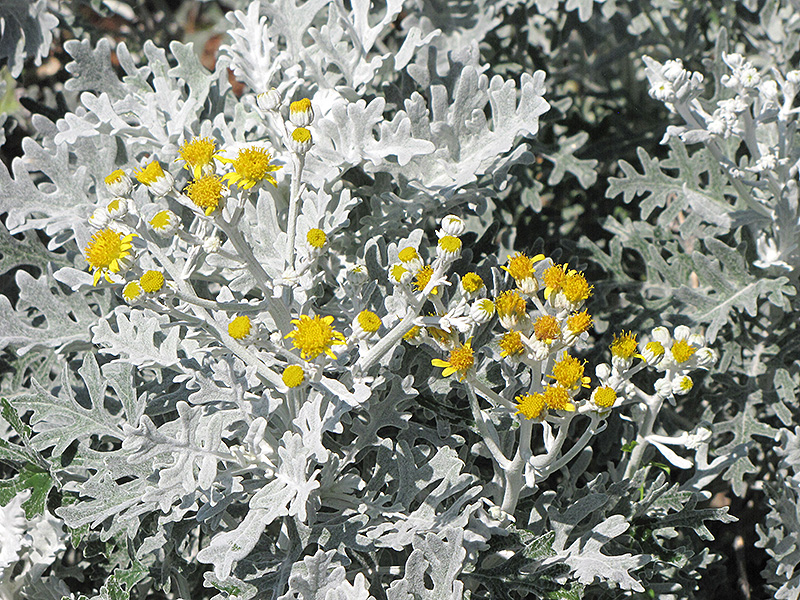
Silver Dust Dusty Miller (Senecio cineraria 'Silver Dust') in Denver Arvada Wheat Ridge Golden
Cineraria maratima Silver Dust will grow to a height of 10-50cm and a width of 10-50cm. Cineraria maritima Silver Dust is an attractive perennial with ovate pinnately lobed silver foliage. Yellow liguate flowers appear during summer and are often removed as the main feature is the foliage when mass planted in borders and garden beds.